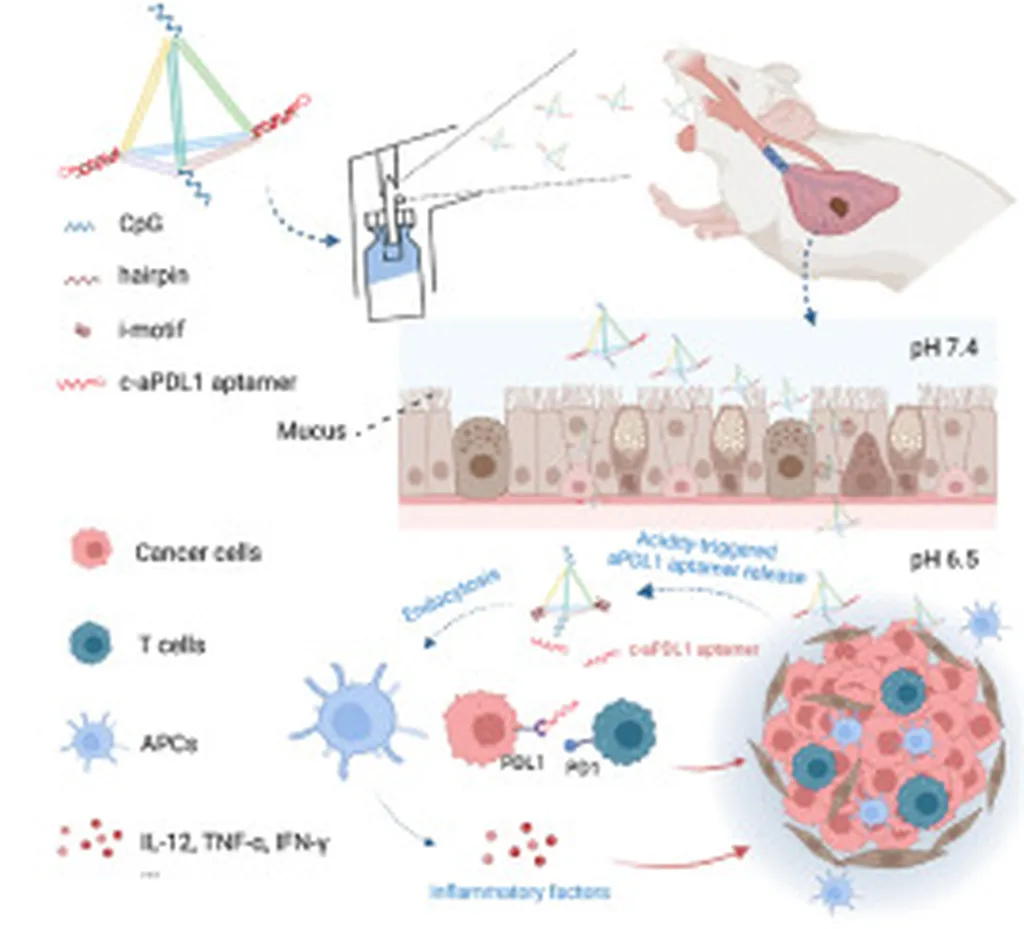In the realm of cancer treatment, a novel approach has emerged that could potentially revolutionize how we tackle metastatic tumors. Researchers, led by Lin-Ping Zhao from the Fifth Affiliated Hospital of Guangzhou Medical University, have developed a unique drug delivery nanoplatform that not only delivers chemotherapeutic drugs but also activates the body’s immune system to fight cancer. This breakthrough, published in *MedComm – Biomaterials and Applications* (which translates to *Materials and Applications* in English), opens up new avenues for combination therapies that could significantly improve patient outcomes.
The research focuses on a metal-coordinated nanoplatform, dubbed CuN, which is formed by coordinating copper ions (Cu2+) with NLG919. This nanoplatform can encapsulate a variety of antitumor agents, regardless of their physicochemical characteristics. One of the drugs tested, β-lapachone, when encapsulated in CuN (referred to as Lap@CuN), shows promising results. “The drug-carrying CuN can catalyze the production of excessive reactive oxygen species (ROS) to suppress tumor cell proliferation and trigger a robust immunogenic cell death (ICD),” explains Zhao. This process releases damage-associated molecular patterns (DAMPs), which in turn reactivate immune cells to exert an abscopal effect—essentially, a systemic immune response that can target metastatic tumors beyond the primary site.
The implications of this research are profound. By combining chemotherapy with immunotherapy, this nanoplatform addresses two critical aspects of cancer treatment: direct tumor cell killing and immune system activation. “This study presents a universal metal-coordinated nanoplatform for the delivery of chemotherapeutic combinations, offering new insights into the design of combination therapies that can potentiate immunotherapeutic responses,” says Zhao. The potential to reduce lung metastasis without causing obvious side effects in mice is particularly noteworthy, hinting at a future where such treatments could be translated to human patients with minimal adverse effects.
The commercial impacts for the pharmaceutical and biotechnology sectors are substantial. This research paves the way for the development of next-generation drug delivery systems that can be tailored to specific chemotherapeutic agents, enhancing their efficacy and reducing side effects. The ability to activate the immune system in a targeted manner could also lead to more effective and personalized cancer treatments, addressing the growing demand for precision medicine.
Moreover, the versatility of the CuN nanoplatform means it could be adapted for various types of chemotherapeutic drugs, making it a valuable tool in the fight against different types of cancers. As the field of nanomedicine continues to evolve, this research could inspire further innovations in drug delivery and immunotherapy, ultimately shaping the future of cancer treatment.
In the words of Zhao, “This study offers new insights into the design of combination therapies that can potentiate immunotherapeutic responses.” The journey from lab to clinic is always challenging, but the potential benefits of this research make it a significant step forward in the ongoing battle against cancer. As we continue to explore the frontiers of medical science, breakthroughs like this remind us of the incredible potential that lies at the intersection of chemistry, biology, and medicine.

